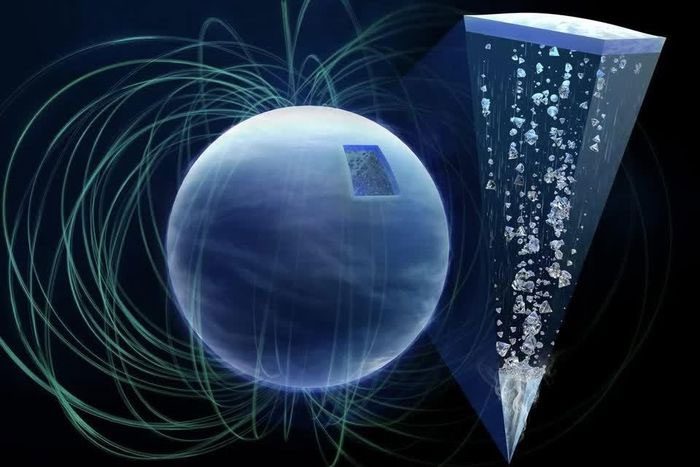Snowstorm events that sparkle and are filled with diamonds may be relatively common throughout the universe. Within our Solar System, there are two such planets.
A recent study published in the scientific journal Nature Astronomy reveals that on icy giant planets, diamonds can be formed in areas of extreme temperature and pressure deep within the atmosphere, rather than from deep within the Earth’s crust as is the case on Earth.
Right within the Solar System, we have two worlds exhibiting this fascinating phenomenon: Uranus and Neptune.

Diamonds are formed and fall like rain on icy gas planets – (Photo: XFEL/NASA).
According to Science Alert, experiments conducted by the research team indicate that the extreme temperatures and pressures deep within the atmospheres of these two giant planets are sufficient to break down hydrocarbons such as methane (CH4).
This allows “lonely” carbon atoms to bond with four other carbon atoms, resulting in the formation of solid diamond crystals.
The experiments also show that the process of “diamond formation in the atmosphere” requires significantly lower temperatures and pressures than the way precious crystals are formed on Earth.
“This breakthrough not only deepens our understanding of icy planets in the Solar System but also has implications for exploring similar mechanisms in exoplanets,” said physicist Siegfried Glenzer from the SLAC National Accelerator Laboratory (USA), a member of the research team.
The study also indicates that these “sky diamonds” can form at shallower depths than initially estimated, meaning that at a certain altitude, diamonds are still descending, dragging along gas and ice, much like raindrops.
Diamond rain could significantly influence the magnetic field of the planet, giving Uranus and Neptune a unstable, asymmetrical magnetosphere unlike that of Earth.
Of course, to confirm this and to better understand how diamond rain and snowstorms stir the dense atmospheres of Uranus and Neptune, we will need to wait for more advanced spacecraft to be developed, designed for deep atmospheric exploration.


















































